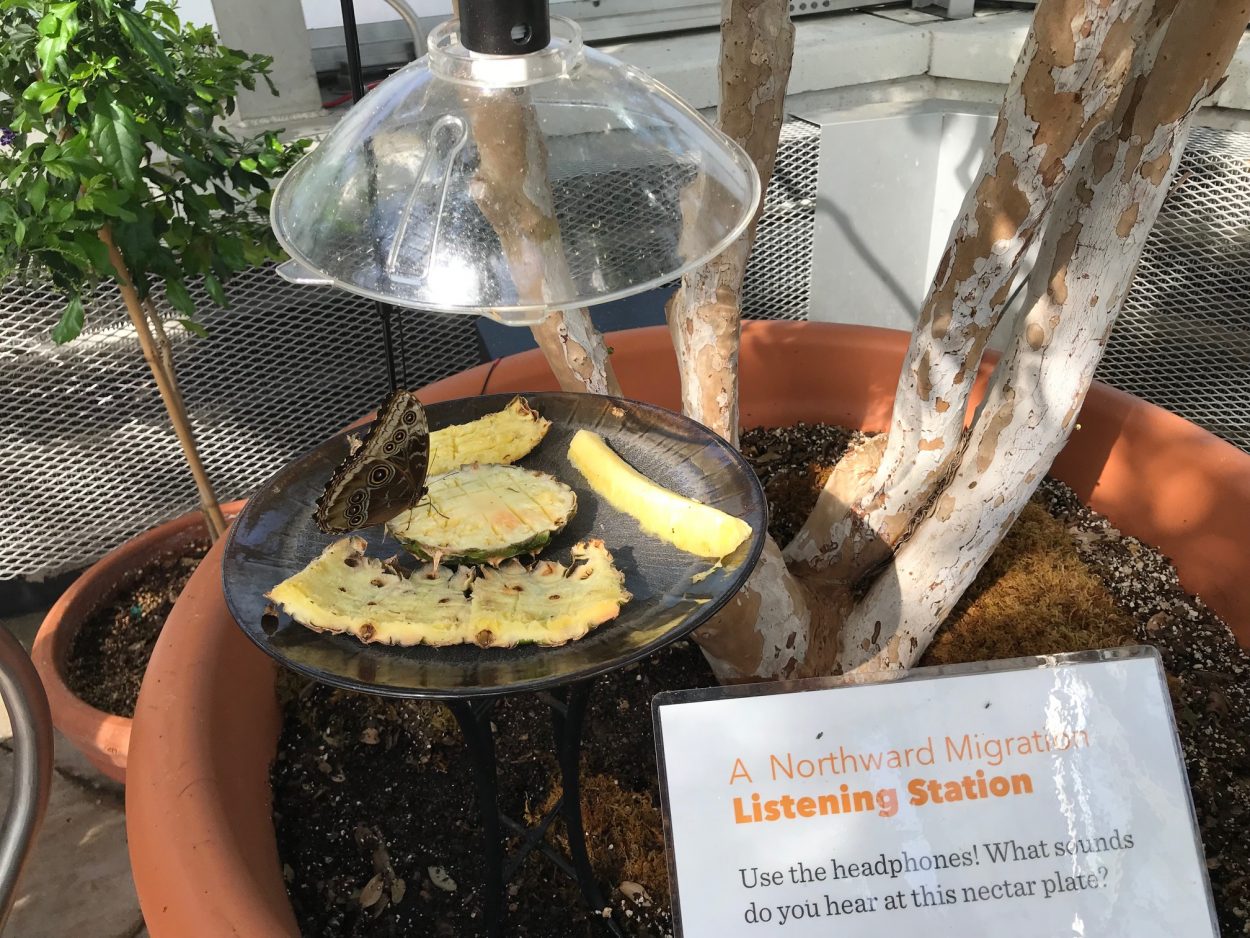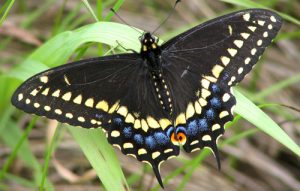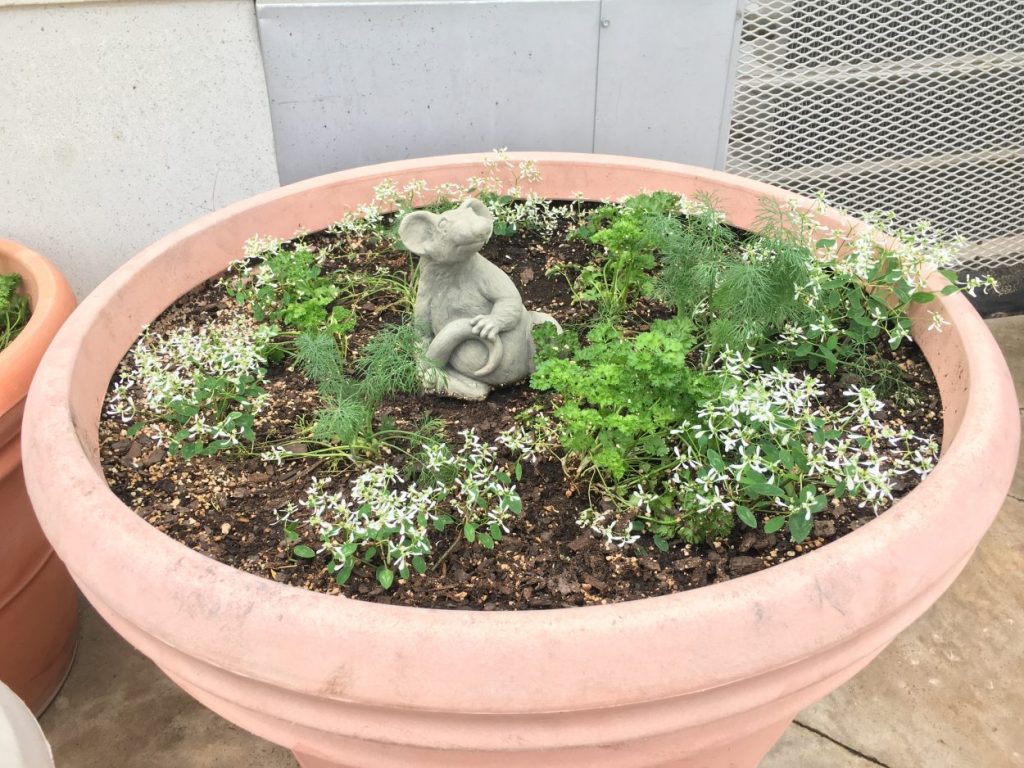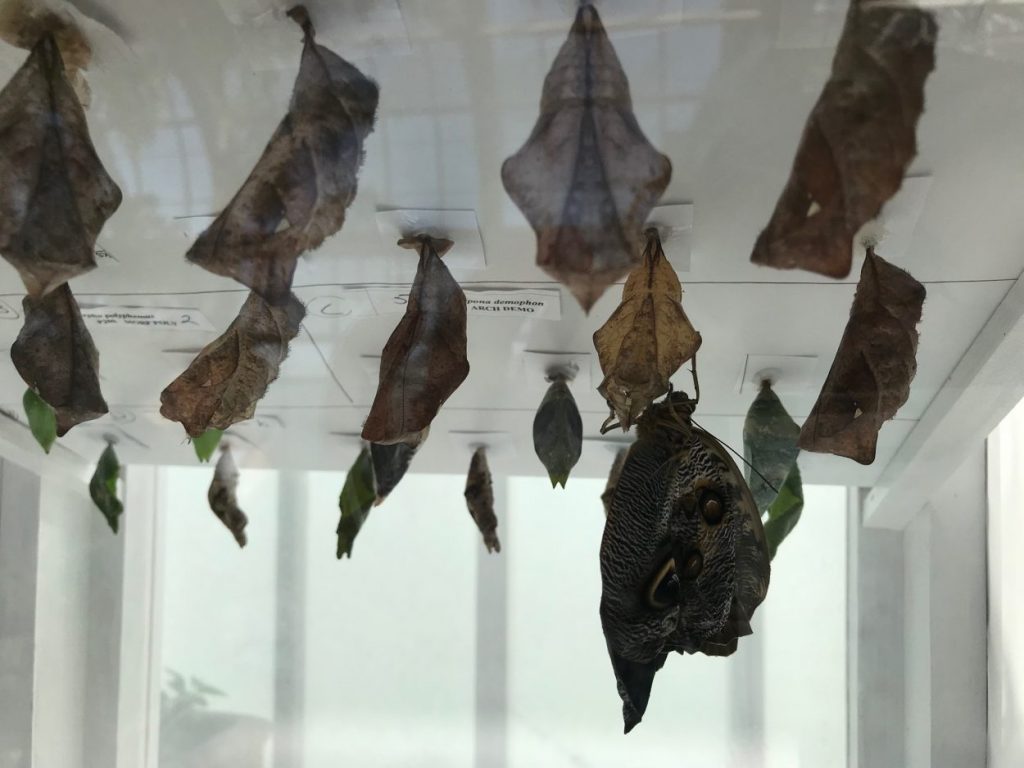A Northward Migration Sound Installation
It’s a magical feeling to be in a room surrounded by hundreds of captivating butterflies. This year we are taking the M&T Bank Butterflies LIVE! exhibition a step further with the installation of sound in connection with Sound Art Richmond. A Northward Migration uses sound to explore the migration routes of butterflies, especially monarchs and will give you an up-close listen to the sounds of butterflies fluttering and flapping their wings or slurping fruit juice through their proboscis. Did you ever think you might be able to hear the sound of a butterfly’s wings?
This sound installation, developed and arranged by Dr. Vaughn Garland, features sounds collected from Lewis Ginter Botanical Garden, field recordings from sites along the butterfly’s migration routes, and interviews with pollinator and butterfly biology specialists. This project was made possible with assistance from a Virginia Tourism Corporation grant. Garland’s work highlights the delicate connection between these stunning and endlessly fascinating creatures and the landscapes, plant life, and climate that impact them, and are vital to their continued survival. The exhibit is divided into three works: “Meadow,” “Wind,” and “Protection,” and will be presented in all four areas of the Conservatory. “Meadow,” has the most presense because meadows are where pollinators live and feed as well as where Garland did many recordings. “I would show up before sunrise and set up my gear while waiting for the sun to rise and butterflies to come alive,” said Garland. He used two microphones to record, one of which, called a binaural microphone, he used to record in a way that replicates how our ears perceive sound.
Garland has been creating film recordings for years and was inspired to take interest and love of pollinators and share it through Sound Art Richmond by utilizing Lewis Ginter’s resources, location and butterfly exhibition. He said he was excited about understanding the importance of pollinators a local conversation where visitors might ask: “What can I do to help?”
Garland himself has a monarch butterfly station in his backyard that helps support plants the monarch’s feed on, such as milkweed.
In addition to the element of sound, we’ve made some other improvements to Butterflies LIVE! Horticulturist, Chelsea Mahaffey created lifecycle container gardens filled with host plants, such as parsley and fennel, to create a space where native Eastern Black Swallowtails can live out their full lifecycle from egg larva to caterpillar, to pupa, and on to adult.
“Every species of butterfly has a small, specific list of plants its caterpillars will eat. Butterflies taste with their feet and are constantly landing on leaves to find out if their babies could or could not eat that particular plant. If they register their caterpillars can eat it, they will lay eggs, ” said butterfly curator Daniel Wright. These container gardens are especially unique as it is the first time we have provided host plants for any butterfly species.
If you aren’t sure what an Eastern Black Swallowtail butterfly looks like, this year we will also have improved visual signage so that visitors can identify and see all the different varieties of butterflies that will be represented in the exhibit.
“The area of the exhibit itself is also greatly opened up which allows for more nectar plants to be included. The more flowers we have, the more butterflies we can sustain,” said Wright. “It also just gives the viewers more space to move around and for butterflies to circle them.” We’ve also brought in several types of new fruit trees, including mango and lychee, to sustain different types of butterfly species in the exhibit, and show visitors what these fruits look like growing.
The butterfly nurseries are also particularly unique because guests can see up-close many different types of tropical butterfly chrysalides.
“They have bright colors like greens and yellows which we don’t see very often here in Virginia,” said Wright. Usually, once or twice a day, butterflies will emerge from those chrysalides and have large bodies full of fluid and small crinkled wings. The butterflies then pump fluid from their body into their wings to inflate them, almost like a balloon. Afterward, the butterflies then dry and harden their wings. During this process, their mouthpiece, called a proboscis also develops. “When they emerge their proboscis is in two separate pieces, like a straw cut in half,” said Wright. “They will continue to circle and uncurl those pieces until they fuse into one functional straw to suck nectar from flowers.” All of these things take place over a couple of hours and are very visible, allowing guests to engage in an incredible and interesting part of the butterfly development.
M&T Bank Butterflies LIVE! is open daily, 9 a.m. to 5 p.m., now through October 14, 2018.
PLEASE NOTE: In order to allow visitors time to view the exhibit before we close at 5 p.m., the last group of visitors will be admitted into Butterflies LIVE! at 4:45 p.m.
Butterfly Release Times
- Daily at 10 a.m.
- Saturdays at 10 a.m. and 2 p.m.



